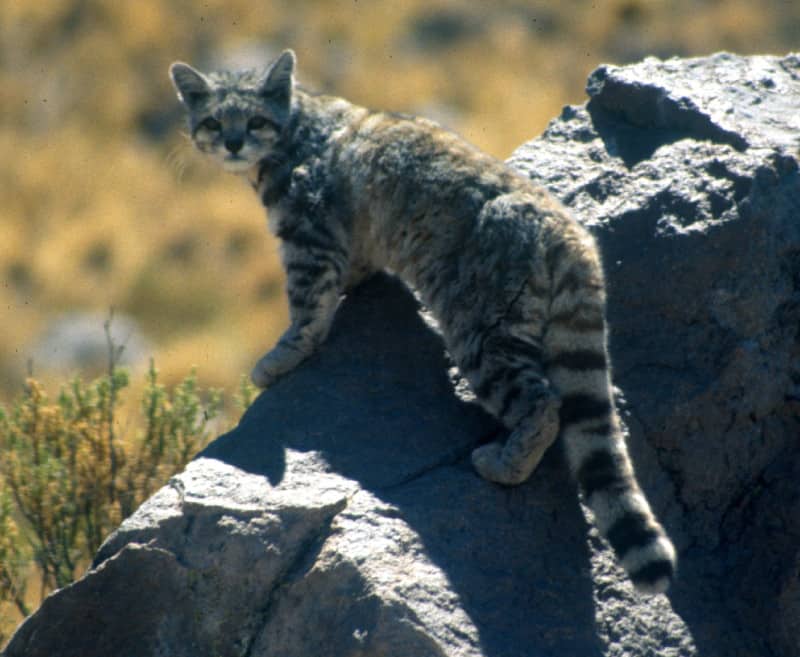Andean Mountain Cat Facts
- The Andean Mountain Cat, Leopardus jacobita, is a small species of wildcat. This beautiful animal is also one of only two species of wild felines for which no subspecies have been classically described.
- The beautiful small cat remains, unfortunately, an extremely rare creature. Estimates place the number of living individuals to be no more than 2,500. Therefore, few people ever encounter the feline.
- The Leopardus jacobita represents one of approximately two dozen small wildcat species found around the world. Quite unfortunately, the marvelous wild cat also ranks among the least known of all wild felines.
- Sadly, the IUCN currently lists this remarkable feline as Endangered. Like many species around the world, it now finds itself facing severe dangers. The greatest threats to its existence consist of habitat loss and climate change.
Related Articles
Andean Mountain Cat Physical Description
Firstly, the top coat of an Andean Mountain Cat is silvery-grey in color. Commonly the underside is white, with numerous dark spots and stripes. It also possesses black rings around the tail and limbs. Body length also sometimes reaches as much as 25 in (64 cm) and its tail occasionally reaches 19 in. (48 cm).
In addition, the Leopardus jacobita averages about 14 in (36 cm) at the shoulder and weighs about 12 lb. (5.5 kg). Further, the tail develops long, thick and blunt without tapering. The front paws have dark narrow stripes that do not form complete rings. The nose also appears black or very dark in coloration.
There does remain a difference between the color patterns in juvenile and mature Andean Mountain Cats, however. The markings on the coat appear smaller, more numerous, and darker on juveniles. This especially holds true of those on the sides of the body.
- Kingdom: Animalia
- Phylum: Chordata
- Class: Mammalia
- Order: Carnivora
- Family: Felidae
- Genus: Leopardus
- Species: L. jacobita
Andean Mountain Cat Distribution, Habitat, and Ecology
Scientists believe that the Andean Mountain Cat lives only in Bolivia, Chile, Peru, and Argentina, in South America. The felines also prefer high-elevation treeless habitat, where the conditions stay very dry, windy, and cold.
Those areas it prefers to inhabit are also quite often fragmented by the presence of frequent deep valleys. Additionally, its distribution is likely to be further localized by the patchy nature of colonies of the preferred prey.
The Andean Mountain Cat also lives at altitudes of between 11,500-15,700 ft. (3,500-4,800 m) in elevation. Though it is about the size of a domestic cat, it appears larger. This occurs because of the long tail and thick fur of the cat.
Unfortunately, estimates indicate the amazing wildcat’s numbers to be in a rapid decline. This occurs primarily due to a loss of habitat. Further, this often happens due to mining, the creation of cattle lands, etc. It also involves a decline in the numbers of its prey.
Its diet consists primarily of the mountain viscacha, which is a type of rodent. The feline will also hunt mountain chinchillas which are also in rapid decline due to hunting for the fur trade. Also, people in Chile and Bolivia often kill them because of local superstitions.
Finally, since the creature lives only in the high rocky mountains, human-inhabited valleys act as barriers. This fragments the population even further, meaning that even low levels of poaching could be devastating.
Species Sharing Its Range
Check out our other articles on 5 Amazing Galapagos Islands Species, Coffinfish, Multnomah Falls, Isabella Tiger Moth, Purple Frog, Striped Possum, Snowy Owl, Naked Man Orchid, Gila Monster

